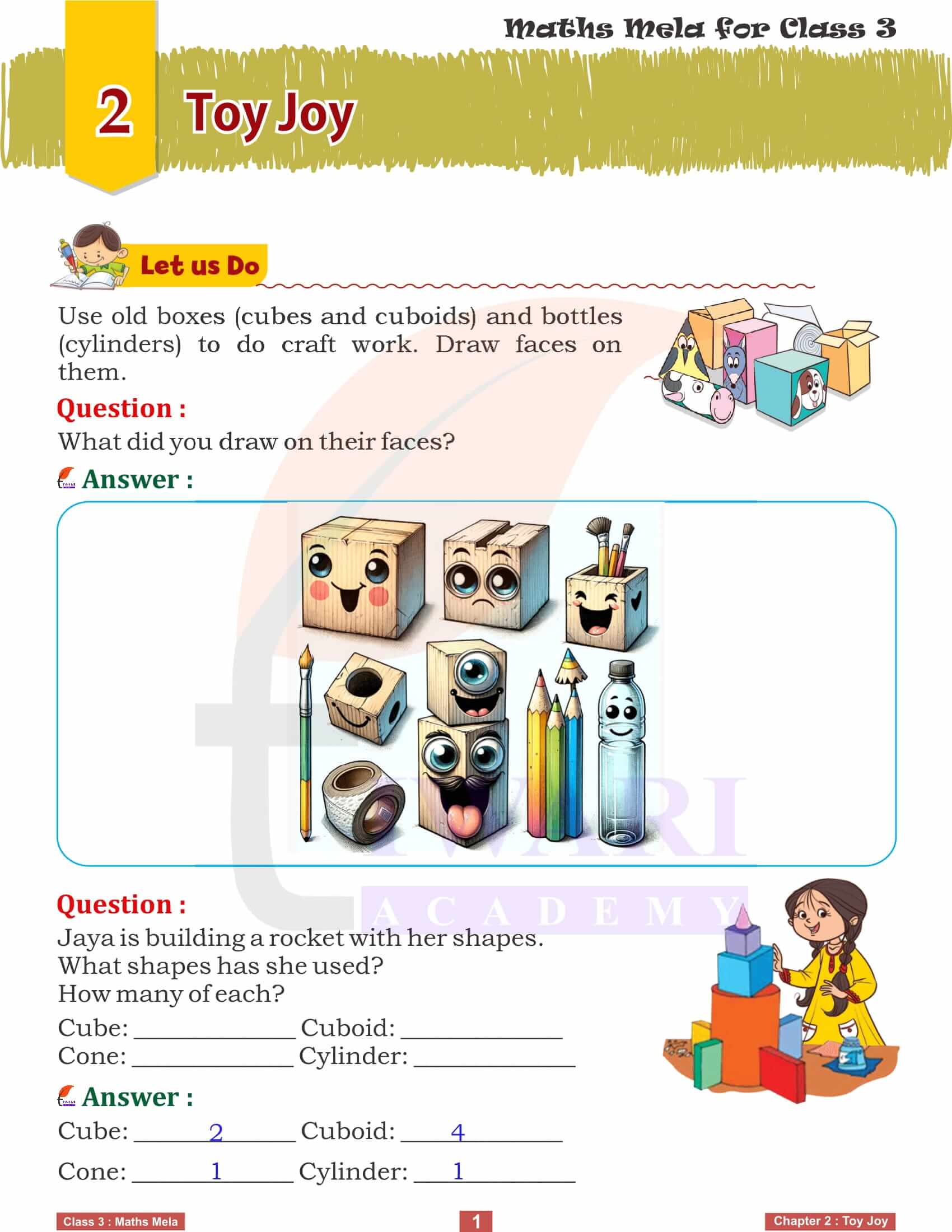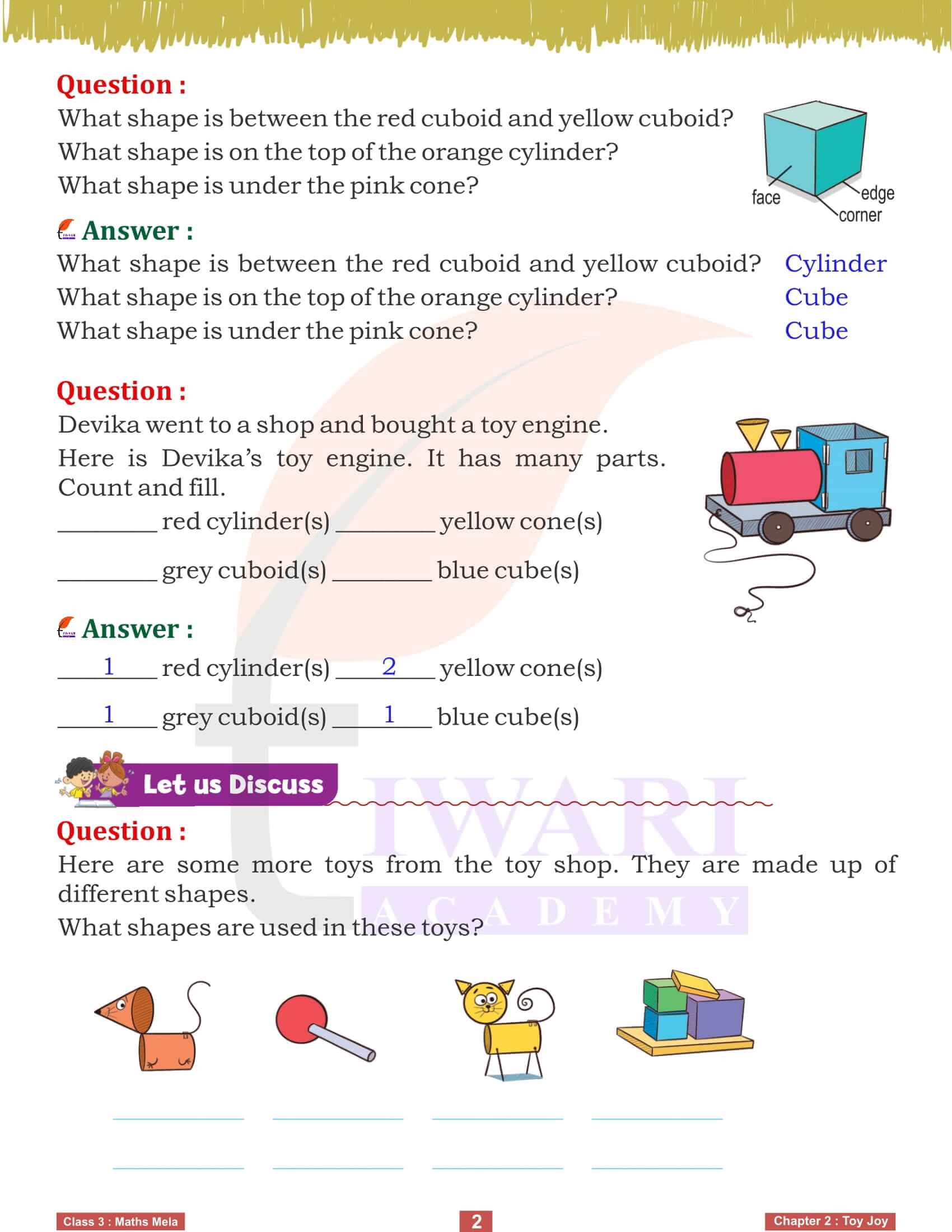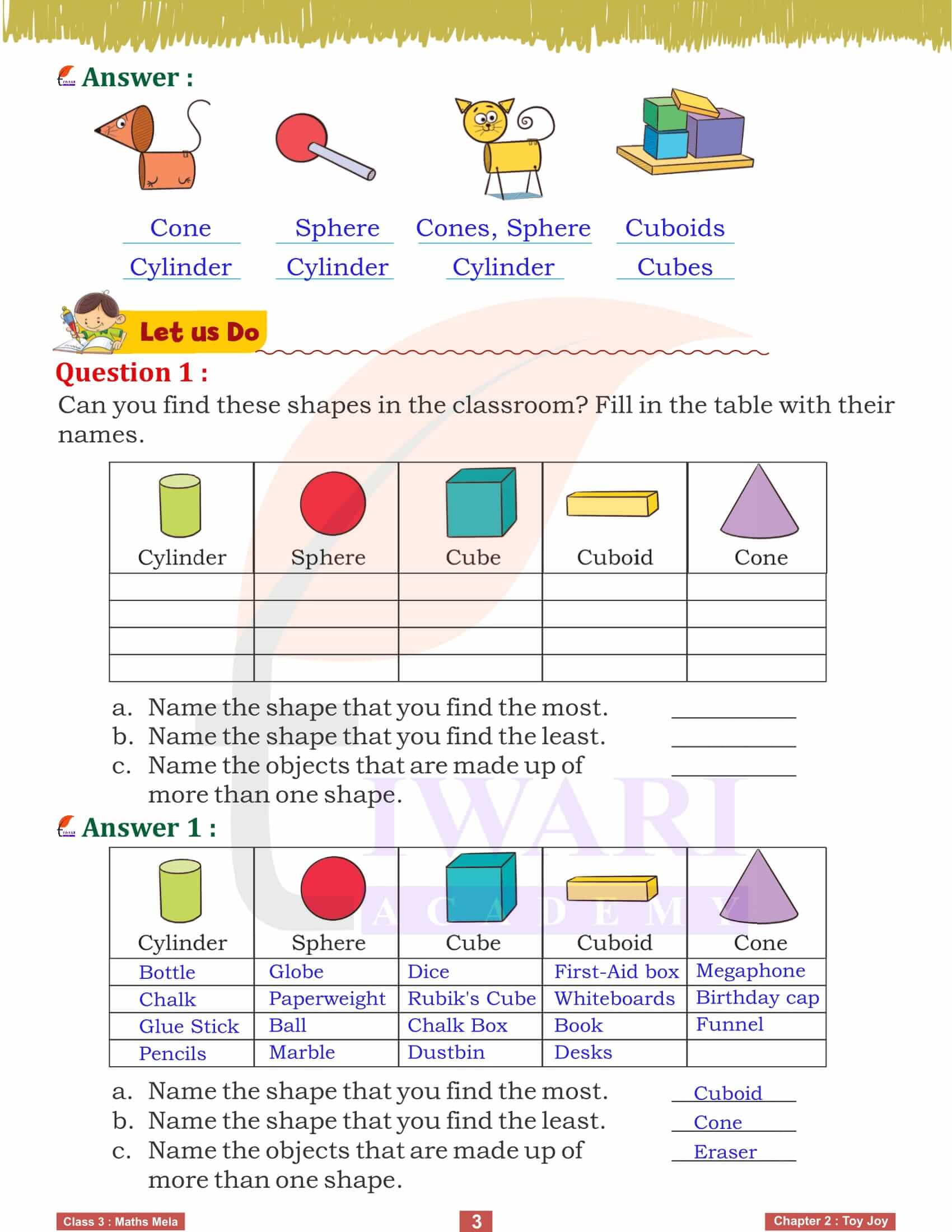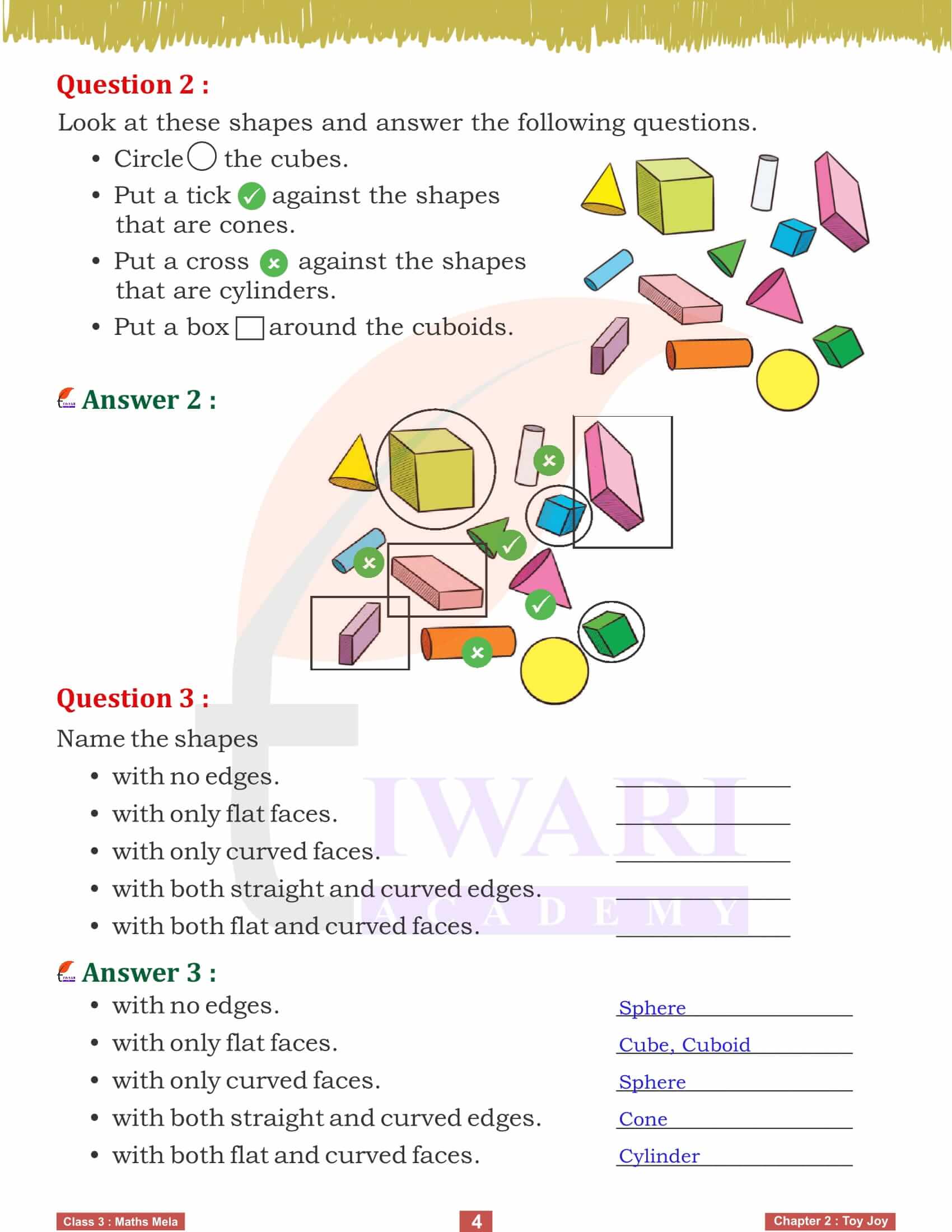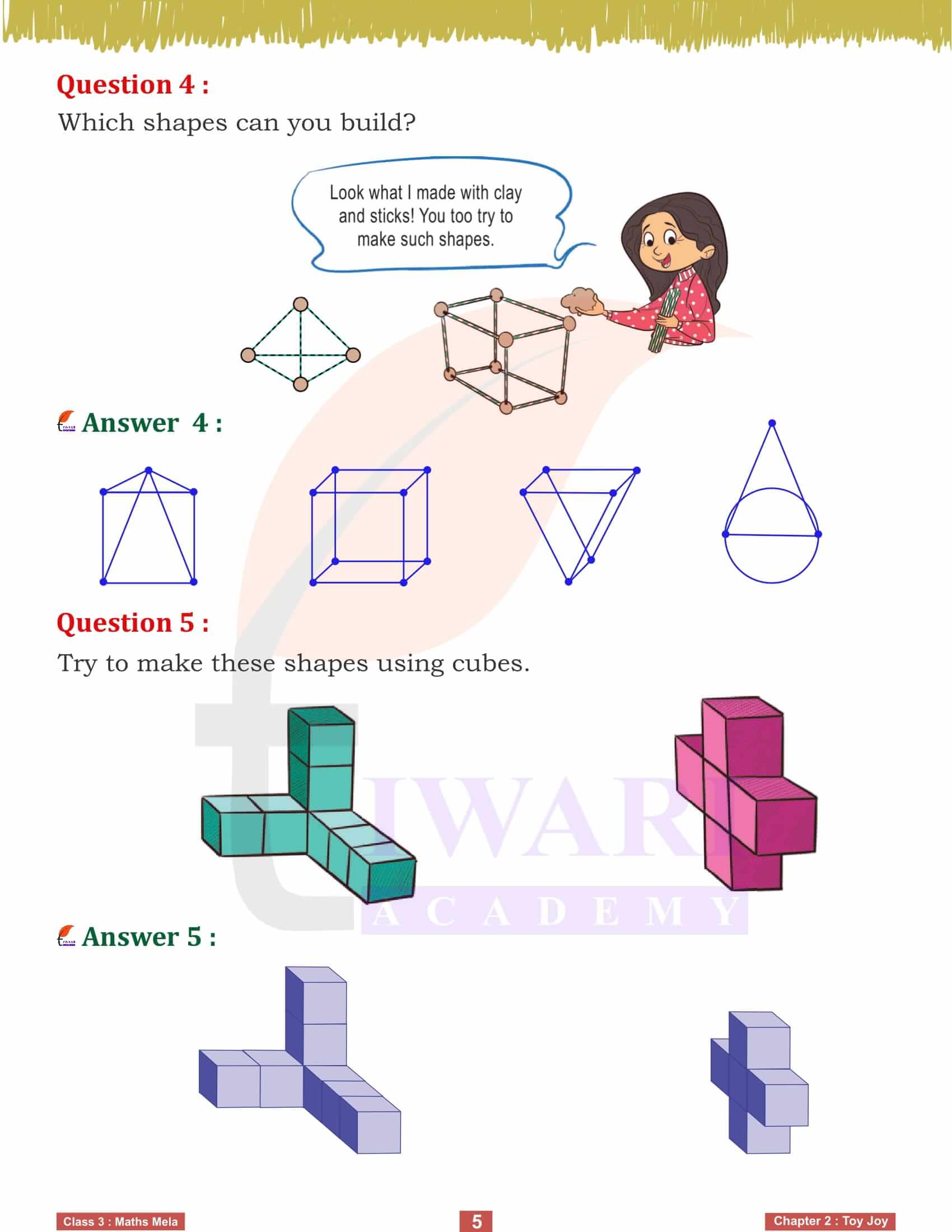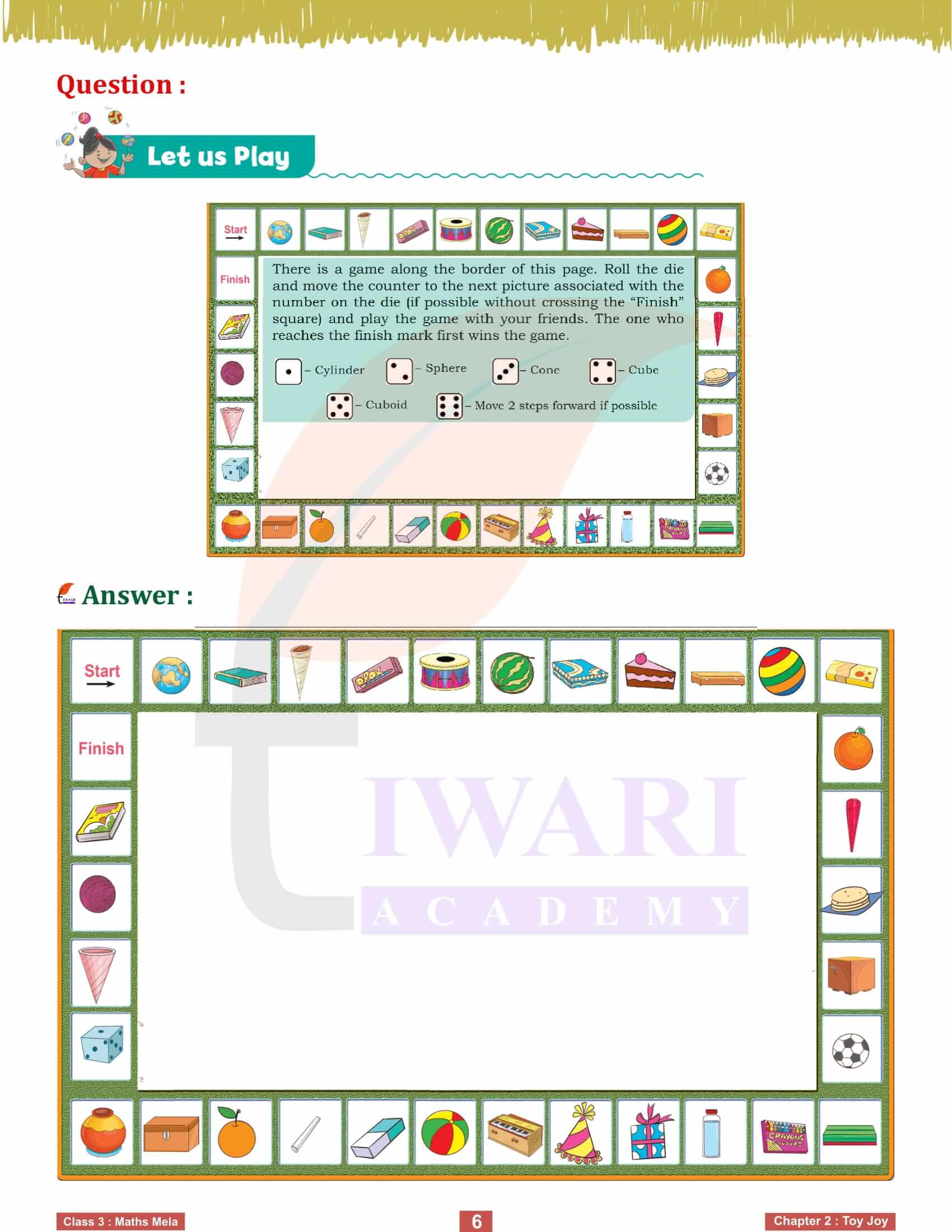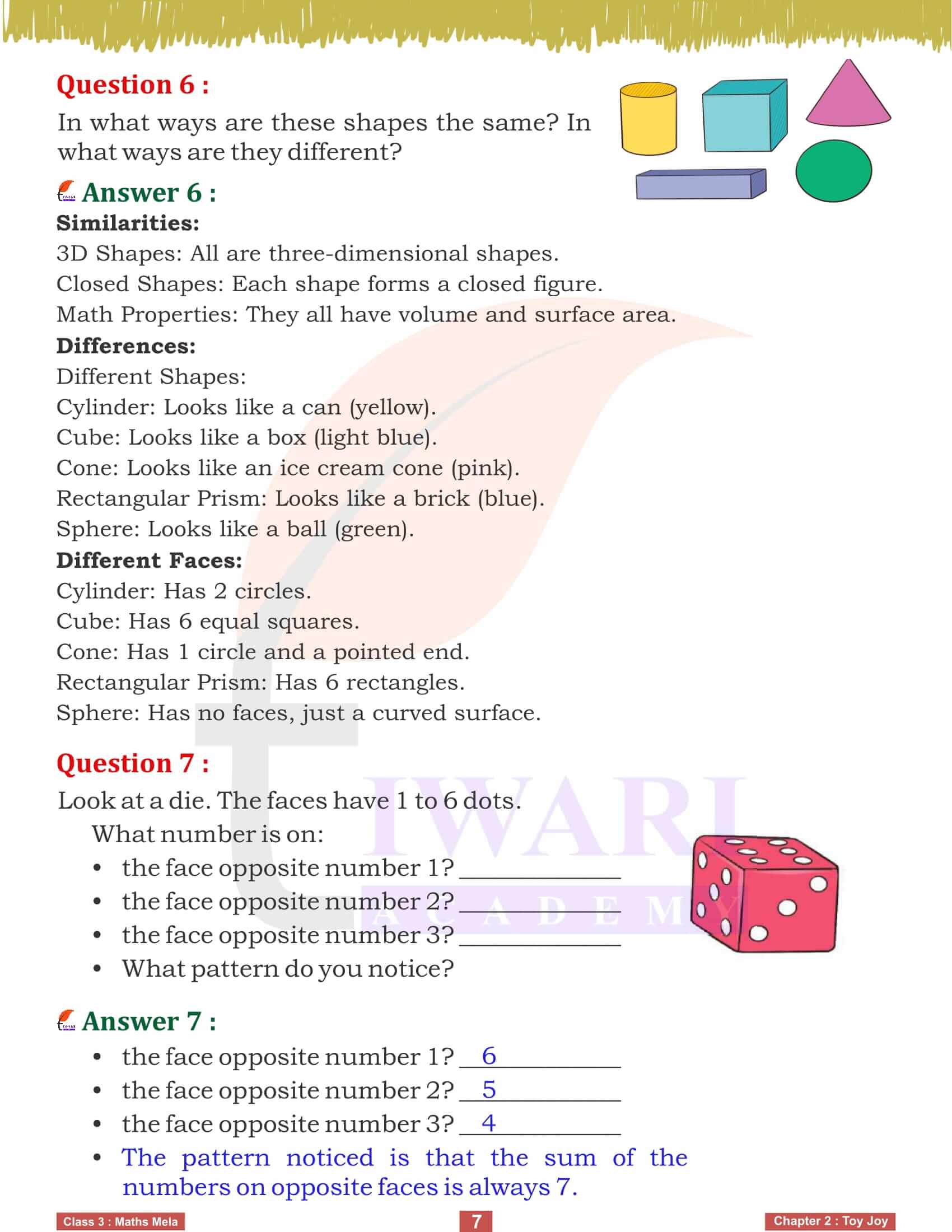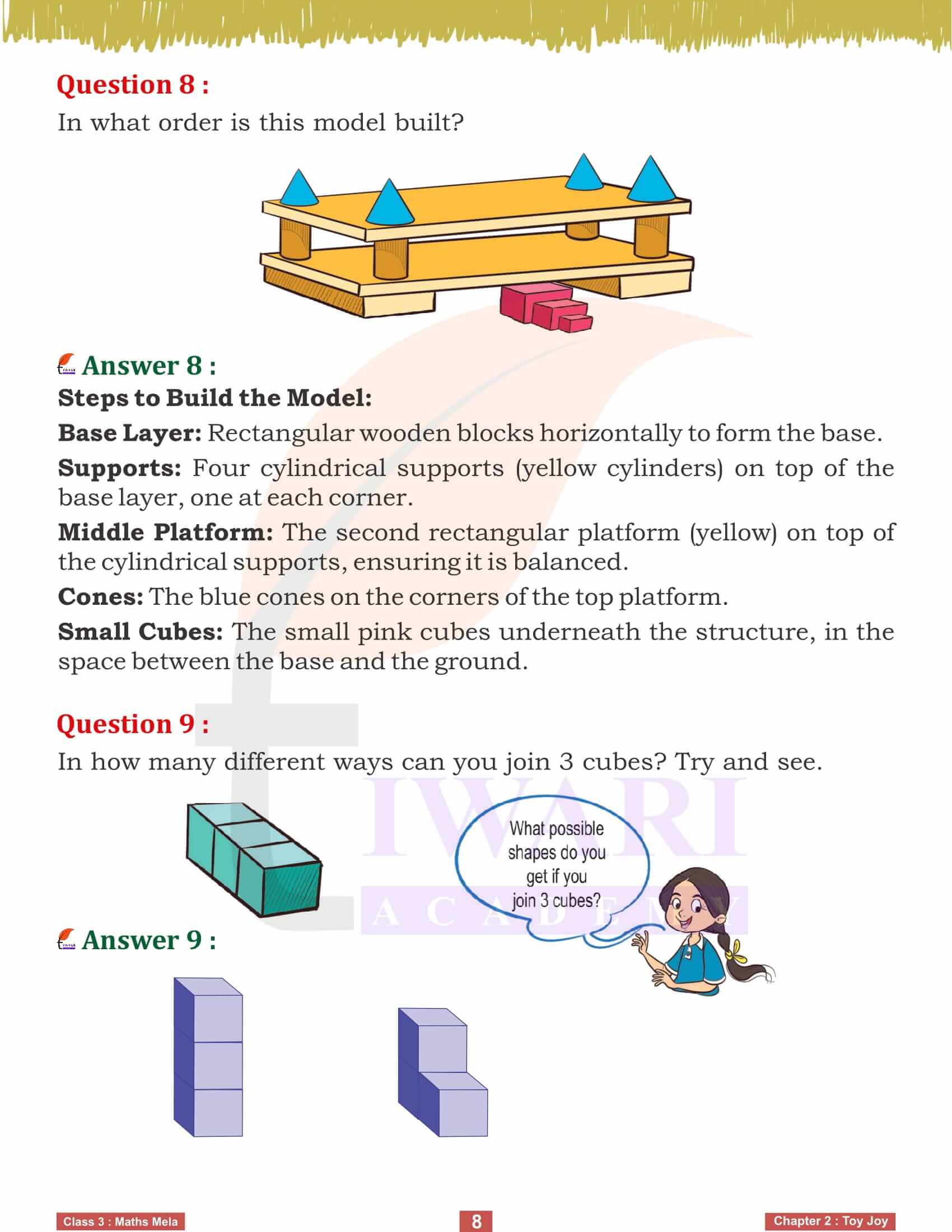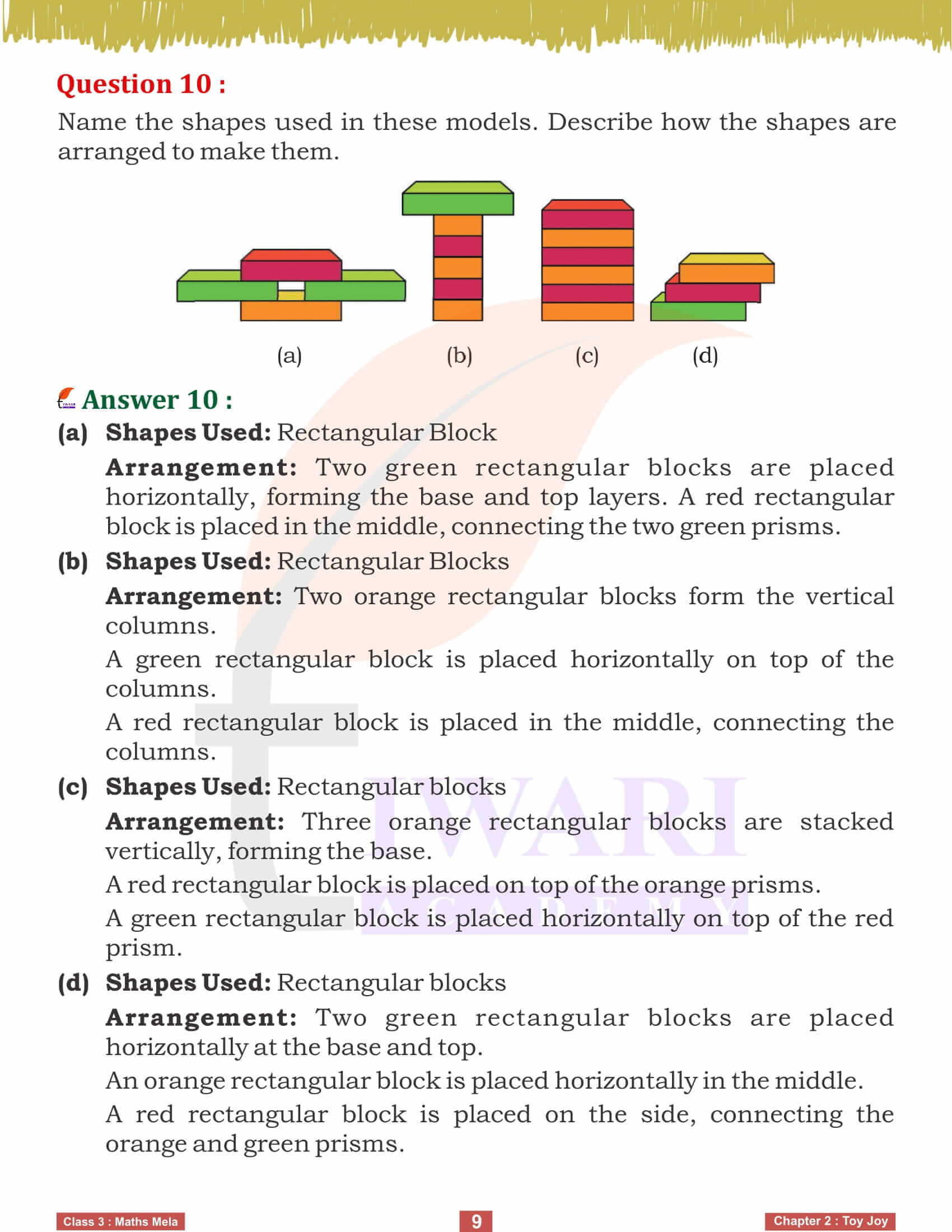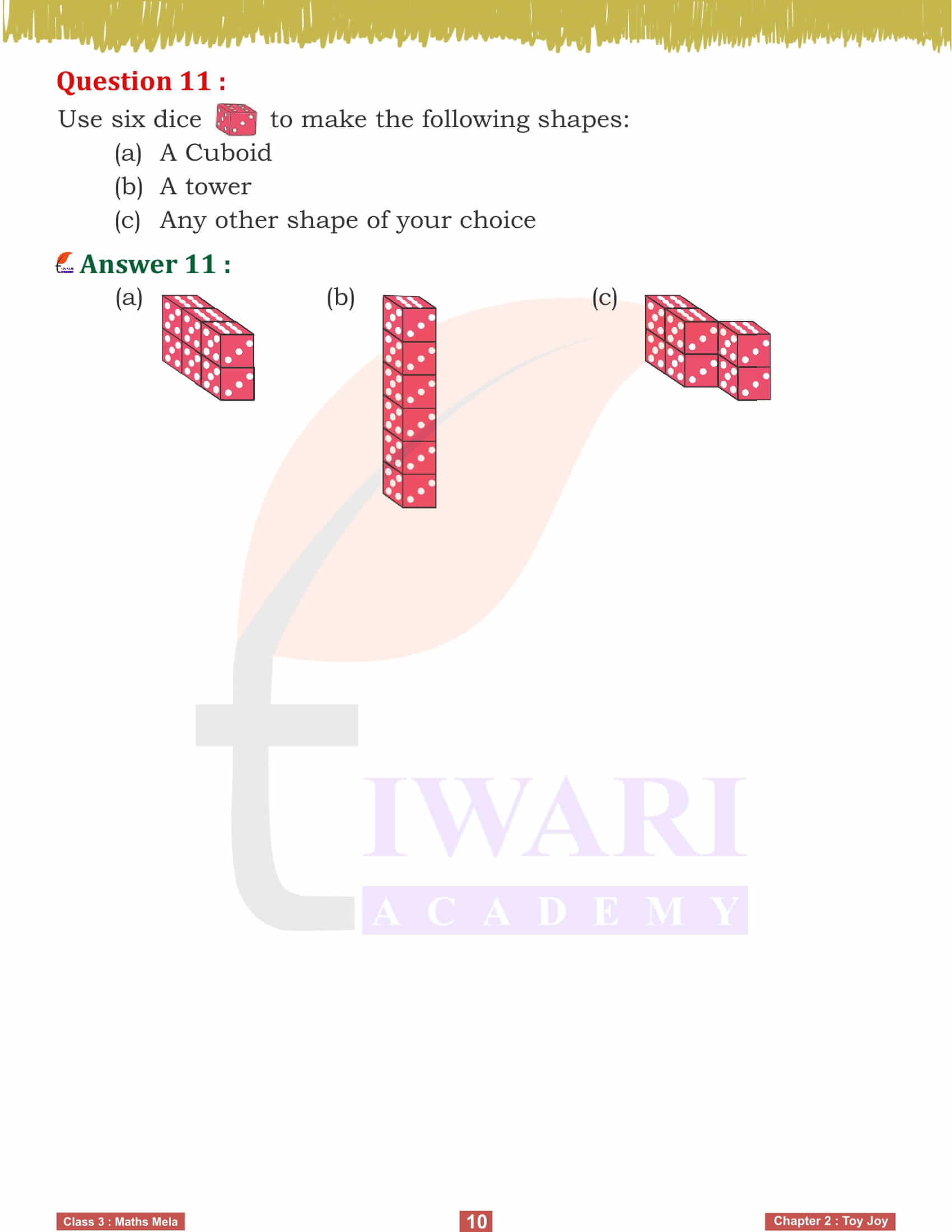NCERT Solutions for Class 3 Maths Mela Chapter 2 Toy Joy in Hindi and English Medium updated for session 2025-26. In this chapter, students explore the world of toys to understand basic mathematical concepts. They learn to count, add and subtract using toys as visual aids. Engaging activities and problems involving different types of toys help students grasp fundamental arithmetic operations. The chapter encourages hands-on learning through fun and relatable examples.
Study Plan for Class 3 Maths
Solutions for Class 3 Maths Mela Chapter 2 Toy Joy
Introduction to Class 3 Maths Chapter 2 Toy Joy
Welcome, Class 3 students, to the fascinating world of shapes and their applications in our daily lives, as explored in Chapter 2 of your Maths textbook named Toy Joy. This chapter delves into the practical use of geometric shapes in creating various toys and objects, making learning fun and engaging. We’ll explore how to identify, describe, and manipulate different shapes to build structures like houses, towers, and rockets. Let’s dive into this journey of discovery, creativity, and fun with shapes!
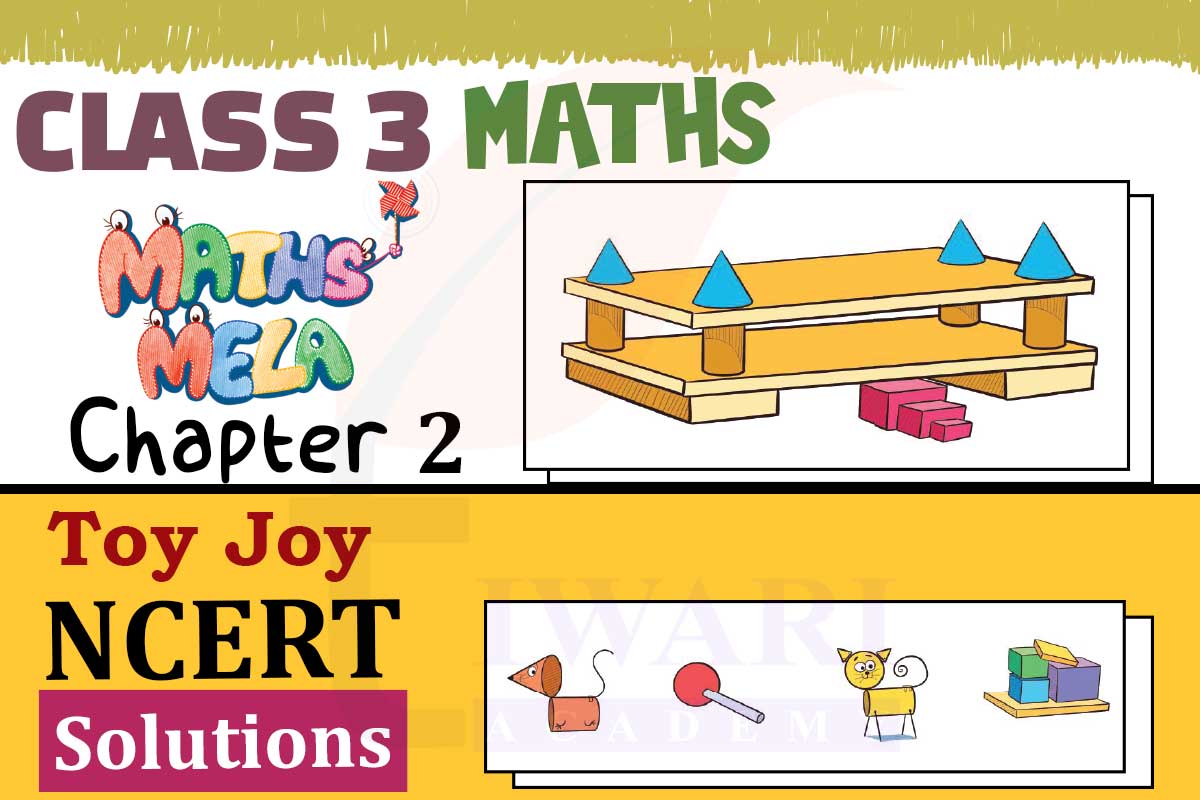
Exploring Shapes through Toys
In this chapter, we begin by understanding how everyday objects and toys can be broken down into basic geometric shapes. You’ll see how Jaya builds a rocket using shapes like cubes, cuboids, cones, and cylinders. Through such examples, we learn to identify these shapes and count how many of each are used in creating different toys. This practical approach helps in visualizing and understanding the properties of shapes, their faces, and edges. You’ll also practice describing these shapes and their arrangements, enhancing your spatial awareness and descriptive skills.
Building with Shapes
We work on to a hands-on activity where you get to build houses, towers, and other structures using shapes you can find around you. This section encourages you to collect objects and arrange them into different models, naming the shapes and talking about their features. It’s a fun way to apply your knowledge and see how shapes come together to form complex structures. You’ll learn to distinguish between straight and curved edges, and how shapes can be combined creatively to build something new and exciting.
Let’s Play with Shapes
Playing games is a great way to reinforce learning, and this chapter includes several engaging activities to do just that. You’ll play a game where you roll a die and move counters based on the shapes you land on, helping you to quickly recognise and name different shapes. Another game involves constructing models using descriptions provided by your classmates, which will test your ability to visualise and replicate structures without seeing them. These interactive activities make learning about shapes enjoyable and memorable.
Shape Identification and Classification
One important skill you’ll develop in this chapter is the ability to identify and classify shapes based on their properties. You’ll answer questions about shapes with no edges, only flat faces, only curved faces, and those with both straight and curved edges. This exercise sharpens your analytical skills and helps you understand the unique characteristics of each shape. By the end of this section, you’ll be able to confidently name and describe a variety of shapes, enhancing your mathematical vocabulary and comprehension.
Creative Challenges with Shapes
To further hone your skills, this chapter presents several creative challenges. You’ll be tasked with building specific models, like a cuboid or a tower, using a given number of cubes. These exercises encourage you to think critically and explore different ways to combine shapes to achieve the desired outcome. You’ll also get to experiment with making new shapes, fostering your creativity and problem-solving abilities. These challenges not only reinforce your understanding of shapes but also stimulate your imagination and innovative thinking.
Conclusion and Summary of chapter 2 in Maths Mela
As we conclude Chapter 2, “Toy Joy,” you’ll have a comprehensive understanding of how geometric shapes are used in everyday objects and toys. You’ll have practiced identifying, describing, and manipulating these shapes through various fun and engaging activities. The chapter 2 lays a strong foundation for your future studies in geometry by making learning interactive and enjoyable. Remember, shapes are all around us, and this chapter is just the beginning of your exploration into the wonderful world of geometry. Keep practicing and have fun with shapes!
Related Links
